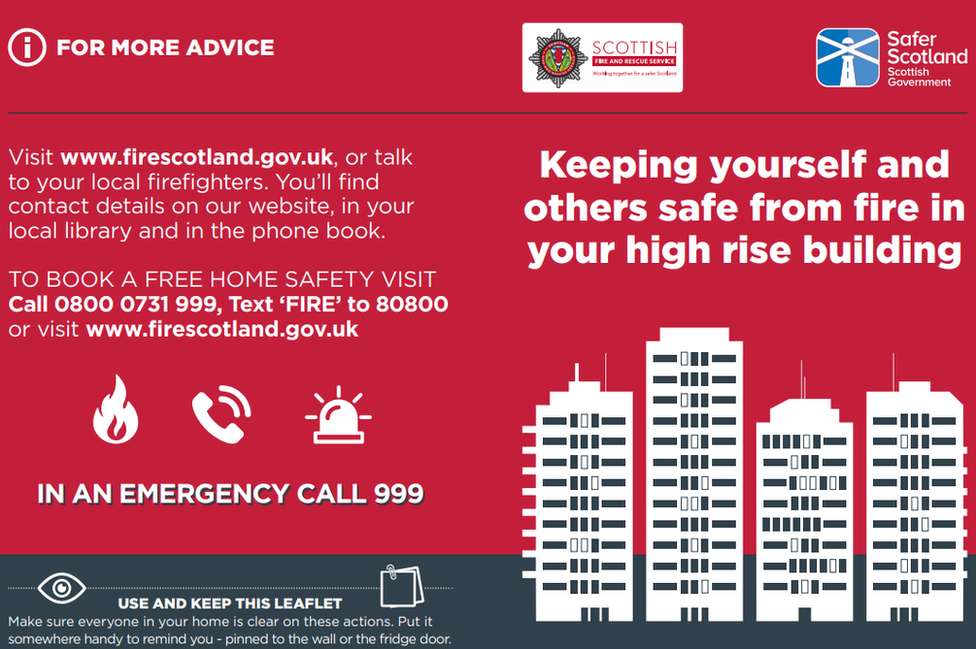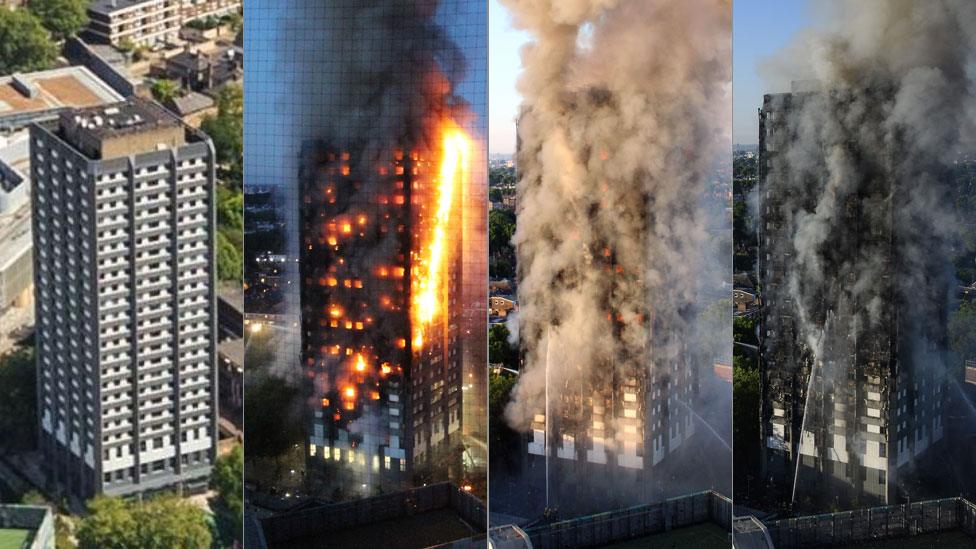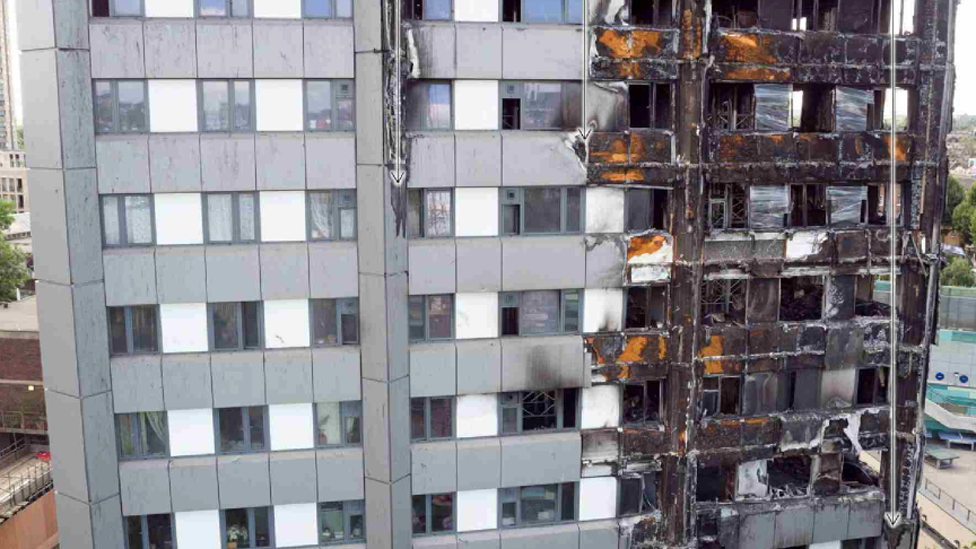High-rise residents to get post-Grenfell fire safety advice
- Published

Residents and landlords across Scotland will receive safety leaflets
Every resident in a high-rise property in Scotland is to be given fire safety advice based on practices introduced since the Grenfell Tower disaster.
Leaflets on how to prevent fires in the home and what to do if one starts in the building are being distributed.
Libraries and community centres in all 15 local authorities with the properties will also be included.
The guidance, external comes more than two years since the Grenfell blaze, which claimed the lives of 72 people.
Changes were introduced in Scotland three months ago to building and safety standards for high-rises.

The new laws include a stipulation that all new buildings in Scotland that are taller than 11 metres will have to be fitted with cladding that slows and controls the spread of fire.
Fire officers have visited every high-rise building in Scotland since 2017 — and they are inspected quarterly.
The new fire safety leaflet has been produced by the Scottish Fire and Rescue Service (SFRS) and the Scottish government.
The information will also be distributed to people responsible for fire safety in high-rise buildings - including councils, housing associations, owners and private landlords.
The Scottish government's community safety minister Ash Denham said the tragedy at Grenfell Tower in South Kensington in 2017 "emphasised how important building and fire safety is".
She said: "Although we already have stringent regulations in place, we are determined to do everything we can to strengthen the safety of those living in high-rise buildings.
"The information leaflets for residents will set out clearly and simply the steps they can take to help prevent fires, and the ways people can best ensure their own safety as well as that of relatives and neighbours."

Scotland's law changes since Grenfell

More than 70 people died in the Grenfell high-rise fire in London
New fire safety measures for high-rise buildings in Scotland were announced in December 2018 and introduced in August this year.
They include:
All new buildings in Scotland taller than 11 metres have to be fitted with cladding that slows and controls the spread of fire.
Mandatory installation of sprinklers in flats and larger multiple-occupancy dwellings
Improved evacuation measures for new high-rise buildings, including sound alerts and escape stairs
New compliance plans for high risk buildings
A database of safety critical information for all high rise residential buildings
Guidance for residents of high rise buildings

Assistant Chief Officer Ross Haggart, the SFRS director of prevention and protection, said the new guidance leaflet would "build on the partnership work already undertaken in Scotland since the Grenfell Tower tragedy".
He added: "We continue to work with our communities to ensure that everyone knows what to do in the event of an emergency.
"And while SFRS does not have legislative responsibility for the provision of fire safety measures in buildings, we will and do work with those responsible for the buildings and the tenants to ensure Scotland's high-rise premises are as safe as possible."
- Published29 October 2019
